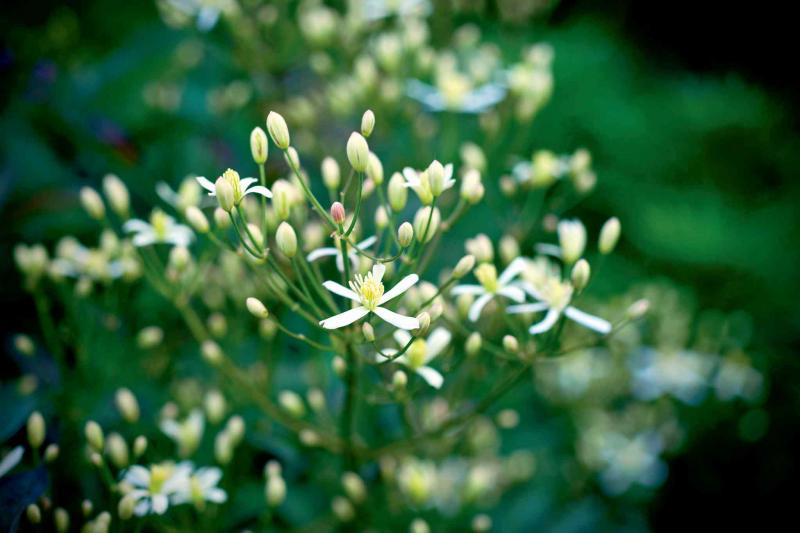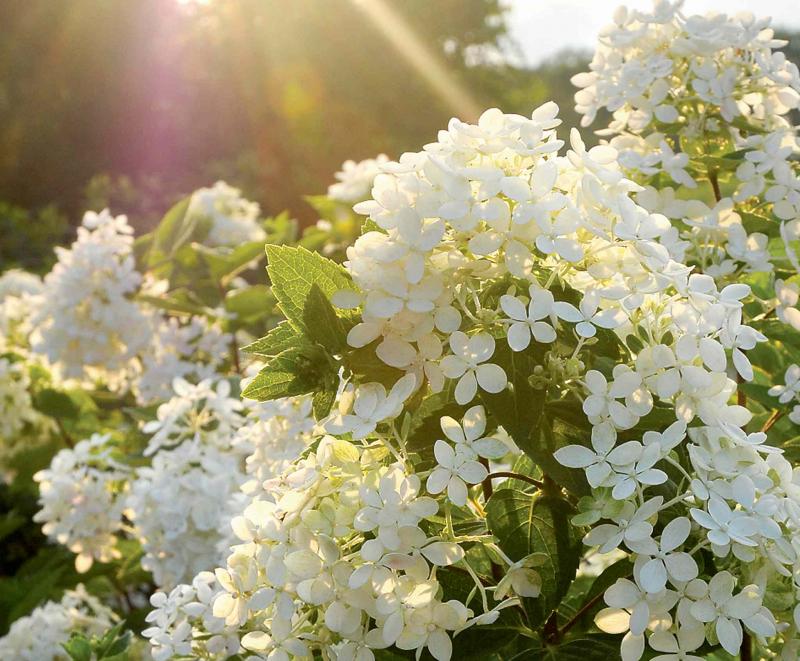
What starts in the flower bed doesn't necessarily always stay in the flower bed. The very nature of sharing space means plants must be compatible to a large degree and show some respect for boundaries as well. There are expectations as to their performance and sometimes even that is not enough to ensure their continued presence in your garden.
No longer satisfied with a plant you once loved? Dig it up and plant a different one. Here's the simple truth: If you are looking for the perfect plant partner to complement your garden on every level, it may not exist.
Sometimes it's a simple case of love-you, love-you-not. For one thing, plants change in appearance as they grow and spread, sometimes bearing little resemblance to the well-behaved plant you initially purchased. Some plants are needier than others or have all kinds of issues. Others may be too passive or too aggressive. Plants have a fairly predictable lifespan, too.
But don't despair when a well-loved plant or even one you thought you loved has left an empty space in your garden. For gardeners, the best season to fall in love again is spring, a time to correct past mistakes and indulge in new experiences.
What are the qualities you are looking for in a plant? Need some advice? In your exuberance to not settle for the ordinary, the experience of other gardeners can ignite your interest in trying something new or serve as a tale of caution.
Start out by knowing what you are bringing home with you and beware of smooth talkers. Jane Kesselman, a normally discriminating gardener, recalls stopping into a garden centre that was preparing to close its doors. The owner made a gift to her of a plant he called angelica, suggesting ever so briefly she plant it in a space where it would have a bit of room to spread.
That first year in Kesselman's River Heights garden, the beautifully named plant was delicate and lovely, surprising her with its amazing growth of almost one metre. The second year, it grew to two metres and was extremely attractive to hordes of aphids. Her children called it Jack in the beanstalk. The stalk grew to five cm in diameter, and Kesselman had to take an axe to it to remove it from her garden. A self-seeding biennial, it continued to make its presence known for years afterward. Of course, all plants have their good points. Angelica archangelica's stems and roots are sometimes used to flavour gin and vermouth.
Kesselman recommends verbascum silver mullein. The tall spires of lemony yellow blooms with velvety, silvery-grey leaves have a bold, architectural beauty. Seedlings are easily removed.
I've had many seasons of discontent with a plant called lamium maculatum. Attracted to a variety called beacon silver with its whorls of two-lipped flowers in pretty pink and silvery leaves with green margins, but best of all its ability to grow in shade, I foolishly purchased several. A prolific species thanks to its ability to self-sow and spread by rooted runners, there is no area of the garden lamium is afraid to conquer. With the threat of it becoming almost a hedgerow as it squeezes out other plants, I spent many hours on my knees in an attempt to uproot it from my garden.
Still, lamium does have its uses and there are varieties that exhibit much greater self-control. Lamium galeobdolon Hermann's pride with variegated leaves and creamy yellow flowers is an excellent choice for a dry shade border, forming a well-behaved mound. In midsummer, shear it back hard.
There are many plants that are improvements on another. Craig Gillespie, head gardener in the English Garden at Assiniboine Park, is always on the lookout for companion plants that can accentuate a planting without requiring a lot of attention.
"Baby's breath (Gypsophila paniculata) is tried and true," says Gillespie, "but something about its less-than-baby-fresh scent and the fact it often tends to collapse, leaving a gaping hole in its centre, makes it a less than optimal choice."
In its place, Gillespie has discovered clematis recta. Featuring sprays of beautiful white star-shaped blossoms, clematis recta grows as a sprawling clump rather than the traditional upright clematis vine. Gillespie says it is completely hardy and easy to care for.
"It also doesn't hurt that it doesn't smell like baby's breath," says Gillespie who suggests giving the plant a late fall or spring haircut.
Linda Dietrick is a River Heights gardener who has also discovered some alternate choices that could work well in your garden, too. Dietrick was looking for something with more manageable growth than that of Virginia creeper (Parthenocissus quinquefolia). a useful vine because it will grow in shade.
"Its rampant growth" says Dietrick, "can cover the side of a barn in a single season." She chose star showers, a zone four variegated Virginia creeper variety with more contained growth and planted it against the north side of her fence where it has thrived for the past 15 years. The green leaves of this more tender variety feature unique white markings resembling a paint splatter.
Dietrick also grows royal purple smokebush (cotinus coggygria), another zone-four plant that, although it often dies back to the snow line in our cold climate, produces a spectacular display in summer and fall with its deep burgundy-coloured foliage.
Naomi Wiebe and Sandy Venton are two gardening friends who share a love for the less mundane, oftentimes placing orders together for various mail-order plants. Interested in trying something other than hosta for a part shade location? Wiebe suggests meadow rue (thalictrum rochbrunianum), a truly breathtaking plant specimen that grows on tall, dark purple stems and produces masses of tiny, lavender flowers.
It has survived a number of moves and divisions. Wiebe shares the seedlings with friends or plants them in different corners of her garden.
Love roses but not some of the associated problems such as black spot? Venton avoids the problem entirely and plants peonies instead. She loves all kinds from herbaceous to Itoh and tree peonies. A favourite source is Fraser's Thimble Farms in Salt Spring Islands, B.C.
Venton's new found love is Kamata Nishiki tree peony, which dazzled in her garden last summer with voluptuous mauve-coloured blooms. On order is another tree peony, Paeonia rockii, which features tissue-paper-like white blooms with a hint of pale pink and a deep maroon base.
Not all plants present a come-hither look at first glance and hence, risk being overlooked. An example is sea holly (eryngium). Susan Southern, a St. Vital gardener, is in love with this plant's silvery-blue bracts and spiny green leaves. It may not invite touching, but it definitely commands attention in the garden.
With more than a few weeks left to dream about what we may decide to plant in our gardens this year, be open to considering a range of interesting alternatives to everyday plants. Noteworthy characteristics are not limited to the new plant varieties you will see at the garden centre this year.
Of course, the joy of the hunt for new plant varieties may be the greatest pleasure after a long winter. I can never resist a new hydrangea variety or two. Compact size will continue to figure large in new hydrangea offerings.
I plan to try little-quick-fire hydrangea in the two tall containers located at my front entrance, enjoy their lacy rosy-coloured blooms that last all season long right up until the first frost, and then transplant this hardy variety into a sunny spot in my garden.
Jan Pedersen, sales rep for Bylands Nurseries, says a new compact hardy hydrangea, sugar puff from HGTV, will debut this spring. Its floriferous white blooms and compact size (less than a metre) will be very similar in form to that of bombshell, another compact variety that was released a few years ago.
If you have felt somewhat disenchanted by the beautiful but brief blooming period of weigela, Pedersen suggests taking a look at sonic-bloom pearl reblooming weigela -- abundant white flowers that turn to pink cover the plant in early summer and then promise a second and third showing in middle and late summer.
Remember to speak your plant's language. Read the plant tag carefully and care for it accordingly. The result could be a marriage made in heaven.
colleenizacharias@gmail.com




